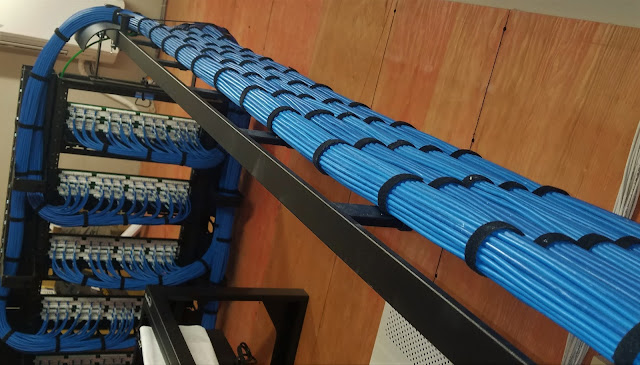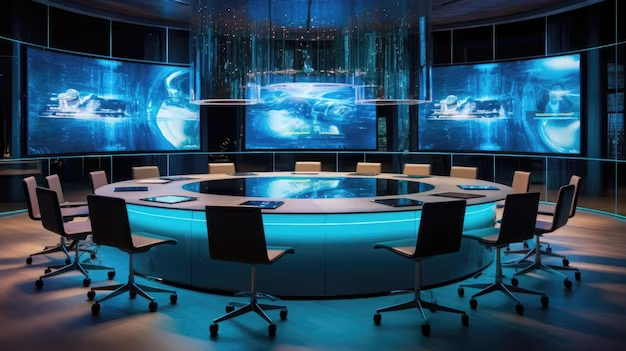Transforming Spaces: The Role of Audio-Visual Integrators in Modern Environments
But what exactly is audio-visual integration, you may ask?
At its core, it's the art and science of bringing together audio and video
components to create cohesive and dynamic environments. From corporate
boardrooms to educational institutions, healthcare facilities to entertainment
venues, AV integration plays a pivotal role in shaping the way we interact with
our surroundings.
Understanding Audio-Visual Integration
In today's interconnected world, audio-visual integration
serves as the cornerstone of modern technology-driven environments. At its
essence, AV integration encompasses the seamless merging of audio and video
components to create immersive and interactive experiences. This process
involves the careful selection, installation, and calibration of equipment, as
well as the integration of software and hardware solutions to deliver seamless
functionality.
Similarly, in educational settings, AV integration plays a
crucial role in facilitating engaging and interactive learning experiences.
From interactive whiteboards and multimedia presentations to virtual classrooms
and distance learning solutions, audio visual integrators work hand-in-hand
with educators to create dynamic learning environments that foster
collaboration and creativity.
In essence, audio-visual integration transcends the
boundaries of traditional audio and video systems, transforming static
environments into dynamic spaces that engage the senses and inspire
imagination. Whether it's a corporate office, educational institution,
healthcare facility, or entertainment venue, the expertise of AV integrators is
instrumental in bringing visions to life and elevating the overall experience
for users. Through meticulous planning, expert installation, and ongoing
support, audio visual integrators ensure that every aspect of AV integration is
seamlessly executed, resulting in environments that are both functional and
visually stunning.
The Evolution of Modern Environments
Gone are the days of static, one-dimensional spaces today's environments are dynamic, interactive, and designed to engage all the
senses. This evolution is fueled by the increasing integration of audio-visual
technology, which has become an integral part of virtually every industry and
sector.
But the impact of AV integration extends far beyond the
corporate world – it's also revolutionizing healthcare, hospitality, retail,
entertainment, and beyond. In healthcare facilities, AV technology is being
used to improve patient outcomes, enhance communication between medical staff,
and create more comfortable healing environments. In hospitality settings, AV
integration is elevating the guest experience, from interactive kiosks and
digital signage to in-room entertainment systems and smart hotel amenities. In
retail spaces, AV technology is driving customer engagement and boosting sales
through immersive shopping experiences and interactive displays.
The Role of Audio-Visual Integrators
Audio-visual integrators serve as the architects behind the
scenes, translating visions into reality through their expertise in AV
technology and integration. Their role is multifaceted, encompassing everything
from initial consultation and design to installation, programming, and ongoing
support. Let's delve deeper into the key aspects of their role:
1. Consultation and Needs Assessment: The journey begins
with a comprehensive consultation, where audio visual integrators collaborate
closely with clients to understand their unique needs, goals, and vision for
the space. Through in-depth discussions and site evaluations, AV integrators gain
valuable insights into the requirements of the project and identify
opportunities for innovation and optimization.
2. Design and Customization: Armed with a deep understanding
of the client's requirements, audio video system integrators embark on the
design phase, where they conceptualize and customize AV solutions tailored to
the specific needs of the project
3. Installation and Integration: With the design finalized,
AV integrators swing into action, meticulously installing and integrating audio
visual components into the designated space. This process requires precision
and attention to detail, as integrators work to ensure that every piece of
equipment is seamlessly integrated and optimized for performance. Their goal is
to create a seamless and intuitive user experience that enhances productivity,
creativity, and engagement.
4. Training and Support: As the project nears completion, AV
integrators provide comprehensive training to end-users, equipping them with
the knowledge and skills needed to operate the AV system effectively.
Additionally, they offer ongoing support and maintenance services to ensure
that the system continues to perform at its best over time.
In essence, audio-visual integrators play a pivotal role in
bringing visions to life and transforming spaces into dynamic and immersive
environments. Through their expertise, creativity, and dedication to
excellence, AV integrators empower clients to harness the full potential of AV
technology and create experiences that leave a lasting impression.
Future Trends and Innovations
The world of audio-visual integration is constantly
evolving, driven by technological advancements, changing consumer preferences,
and emerging industry trends. As we look to the future, several key trends and
innovations are poised to shape the landscape of AV integration in modern
environments. Let's explore some of these trends and their potential
implications:
Immersive Experiences: The demand for immersive experiences
continues to rise, fueled by advancements in technologies such as virtual
reality, augmented reality, and mixed reality. Audio visual integrators are at
the forefront of leveraging these technologies to create immersive environments
that engage all the senses.
Unified Communication and Collaboration Platforms: With the
rise of remote work and distributed teams, the demand for unified communication
and collaboration platforms is skyrocketing. This includes integrating video
conferencing systems, collaboration software, and unified messaging platforms
into AV environments to facilitate remote meetings, virtual presentations, and
collaborative work sessions.
Sustainability and Green Technology: As environmental
concerns become increasingly important, audio visual integrators are embracing
sustainable practices and green technologies in their AV solutions. This
includes using energy-efficient equipment, implementing eco-friendly design
principles, and incorporating renewable energy sources such as solar power and
kinetic energy.
In a world where innovation knows no bounds, audio-visual
integrators stand as the architects of tomorrow, shaping environments that not
only inspire but transform the way we experience the world around us.





Comments
Post a Comment